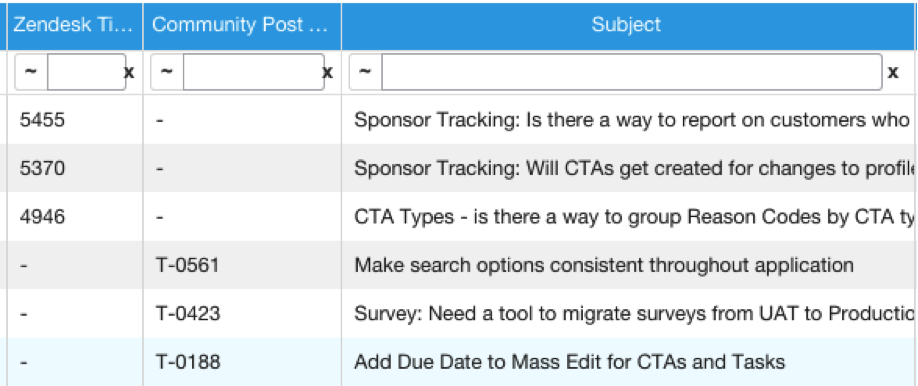Henry Ford famously said, “If I had asked people what they wanted, they would have said faster horses.” Ford’s sentiment highlights the risk of developing products based on what customers say, and the benefit of understanding why customers say what they say. In his case, people just wanted a faster way to get from point A to point B.
Your customer base holds important insights into how your product may need to evolve. Working on the frontlines with your customers, the Customer Success team is uniquely positioned to uncover these insights and provide guidance to Product Managers.
At Gainsight, we have several methods for collecting input from our customer base that support our three primary approaches to product development: 1) listening to our customers, 2) interpreting our customers, and 3) guiding our customers.
Approach 1: Listening to Our Customers
When something isn’t working well in your product, your users feel it. It’s key to empower customers to easily share that feedback. If you are fortunate enough to have passionate customers, you’ll never have a shortage of helpful product feedback.
At Gainsight, we capture most of this type of feedback through our Community. The community helps us to gauge how widespread an issue is, since customers can vote on topics. It also lets us engage directly with customers to ask follow-up questions. In many cases, the feedback is straightforward and requires little clarification. If we agree that a request should be prioritized based on customer demand or our own assessment, we can proceed with implementing the solution.
One example of a feature that Gainsight implemented based on Community input was to maintain a workflow rule’s logic syntax while the rule was being edited. Customers pointed out that the original behavior was unexpected and confusing. This kind of feedback was perfect to receive through the Community – we could see that many other customers were also frustrated, and we needed minimal digging to understand the problem.
An added benefit of using the community is that these posts can be tracked in Gainsight. In our instance of Gainsight, we auto-populate on the Customer360 a table of feature requests from our Community and Support systems. That way, CSMs can quickly see a customer’s full list of requests.


Approach 2: Interpreting Our Customers
A key part of a Product Manager’s job is to hear what people say, and then uncover why they are saying it. A seemingly simple request can actually have a surprising motivation. Clarifying that motivation by asking “why” ensures that the right solution can be developed.
Customer Success managers are well positioned to listen for and uncover needs across the customer base. At Gainsight, we capture that insight through our Customer Themes Meeting. In this quarterly meeting, a Product Manager facilitates a brainstorm among the Customer Success team to identify and prioritize the themes they are hearing across customers. The resulting list of 3-5 prioritized themes and supporting use cases is shared with the Product team. To continue getting this great feedback from Customer Success team, it’s important for the PMs to close the loop and share whether and when they expect to address the themes.
Gainsight Success Plans are an example of a feature developed based on a CSM’s understanding of customer needs. One of our CSMs, Elaine, was consistently hearing a theme that customers needed a better way to manage higher-touch relationships. Her insights helped guide our Product team and lead to our launch of Success Plans.
Approach 3: Guiding Our Customers
The third type of product development is when you do something so innovative that most customers didn’t realize they needed your new functionality until it launched.
Gainsight CoPilot is a good example of this approach. When we started designing CoPilot, our customers were not asking us for a one-to-many email tool. However, we had a hypothesis that as Customer Success teams started to focus on scale, they would need to become more efficient in their communications. Rather than purely integrating with existing marketing solutions, we decided to empower Customer Success teams to directly own their email programs. We launched CoPilot late last year and have had very strong adoption.
Where do these more disruptive ideas come through? It’s hard to pinpoint one particular source, but it’s likely to be some combination of observing customer trends, listening to the market, and making the right bet at the right time.
Bringing It All Together
Alone, none of these approaches would be sufficient. Solely implementing customer enhancement requests would lead to incremental progress, while prioritizing only big innovations would alienate your users. Combined, these three approaches help Gainsight drive better user experience, stronger value propositions, and continued innovation. A balanced approach is key.

